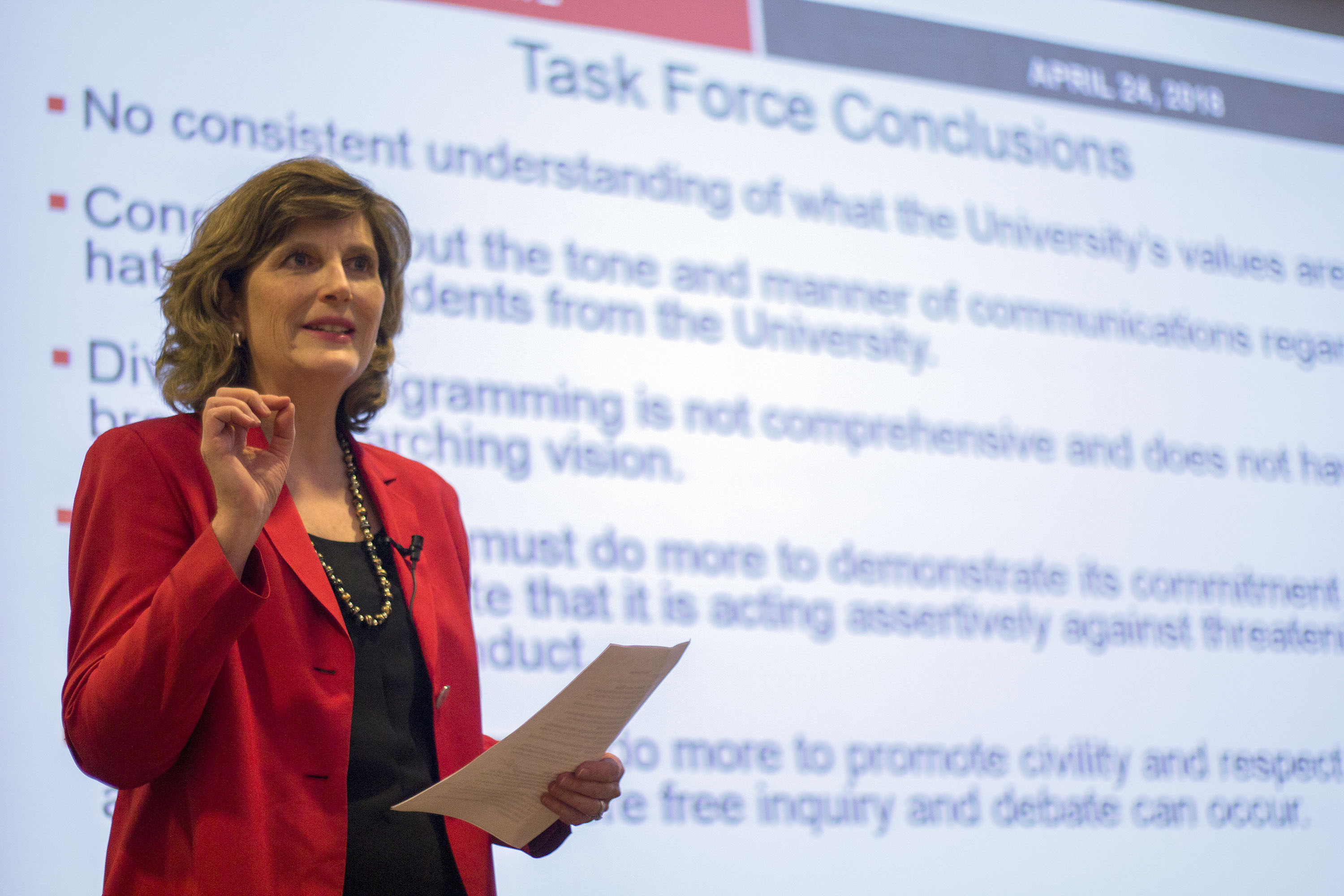The University of Maryland has created six voluntary diversity training programs, as well as an online log for tracking campus hate bias incidents.
The programs come after dozens of reports of hate bias incidents on the campus over the past several semesters, including swastikas drawn in multiple buildings and a noose found hanging in a fraternity house.
This university announced last academic year that students would be able to opt in for email updates to the log. There have been two hate bias incidents so far this semester: a swastika and anti-LGBT language found in campus dorms.
[Read more: “It’s terrifying to go back there”: Students react to hate bias incidents in UMD dorms]
The new trainings, which were created by the Office of Diversity and Inclusion, come in response to last semester’s recommendations from the University Senate task force on diversity and inclusion, which university President Wallace Loh signed in May.
Five of the trainings are specifically for students, said Neijma Celestine-Donnor, the program manager for hate bias response. Three are focused on understanding the origins and effects of hate bias, and one is focused on bystander intervention in incidents of hate bias. The office also developed a training for international students on ways to interact with different people within American culture and how to respond to incidents themselves.
The last program, called “Training the Trainer,” is dedicated to teaching UNIV100 professors how to teach diversity and inclusion in their classes. ODI created two modules for professors to teach — one focused on implicit bias and another focused on navigating hate and bias on campus — said Carlton Green, the director of diversity training and education.
UNIV100, a course focused on helping students adjust to college, is only required for the approximately 2,000 students per year in the Freshman Connection program, according to class registration numbers on the Office of the Registrar’s website.
Students can now register for the other training programs online. Green said making the training programs voluntary is a positive step.
“Requiring people to do diversity-related training … doesn’t promote the interactions and change that we would like,” Green said. “We would like to recreate an environment where engaging in diversity and inclusion is the norm.”
[Read more: UMD group is creating a video series to combat school’s “abysmal” diversity messaging]
The task force recommended a “blend of mandatory and voluntary learning opportunities offered at multiple points throughout a faculty/staff/student’s time at the University.”
Diversity training is currently mandatory for members of sororities and fraternities and is run through the Department of Fraternity and Sorority Life. Other trainings, such as in-person sexual assault prevention training, are now mandatory for incoming students.
Sophomore Victoria Hoke said making the trainings mandatory for students could be beneficial.
“Some kids may not have a diverse upbringing, and this would really help them be able to be inclusive here,” said Hoke, a psychology major. “I went to a mostly white high school, and here it’s different. … It’s good to understand how to interact with people who are different than you.”
Other students, however, believe mandatory training would have little impact on prejudice on campus.
“I just don’t think it’s all that necessary. If you’ve grown up in this world and you’re already racist, then a training isn’t going to fix that,” said Ben Kovalick, a sophomore psychology major.
The task force was created after 2nd Lt. Richard Collins, a black Bowie State University student, was stabbed to death on this campus in May 2017. Sean Urbanski, a white former student of this university, has been charged with murder and a hate crime in the killing.
The recommendations also included creating more transparent and open communication regarding incidents of hate bias and creating a policy prohibiting threatening speech on campus. The group also suggested adopting statements that promote inclusive values and support free speech.
Once the task force recommendations were finalized, the work was turned over to different departments for implementation, including ODI, Assistant Vice President of Student Affairs Warren Kelley said. Cynthia Edmunds, the interim chief diversity officer, believes that while there is still a lot of work to be done, “at this point, ODI are the leaders around helping others.”
Edmunds took over for former interim chief diversity officer Roger Worthington in August. He’d stepped down after just over a year on the job. In late August, he criticized university leadership, saying that he wasn’t getting the “real backing” he needed in his role.
Part of implementing these task force recommendations, Edmunds said, is dealing with the transition of a new chief diversity officer, as well as creating relationships with the community.
“We’re working really hard trying to find the allies and advocates that we should be working with,” Edmunds said. “For us to to be doing that, we really have to engage all parts of the community.”



